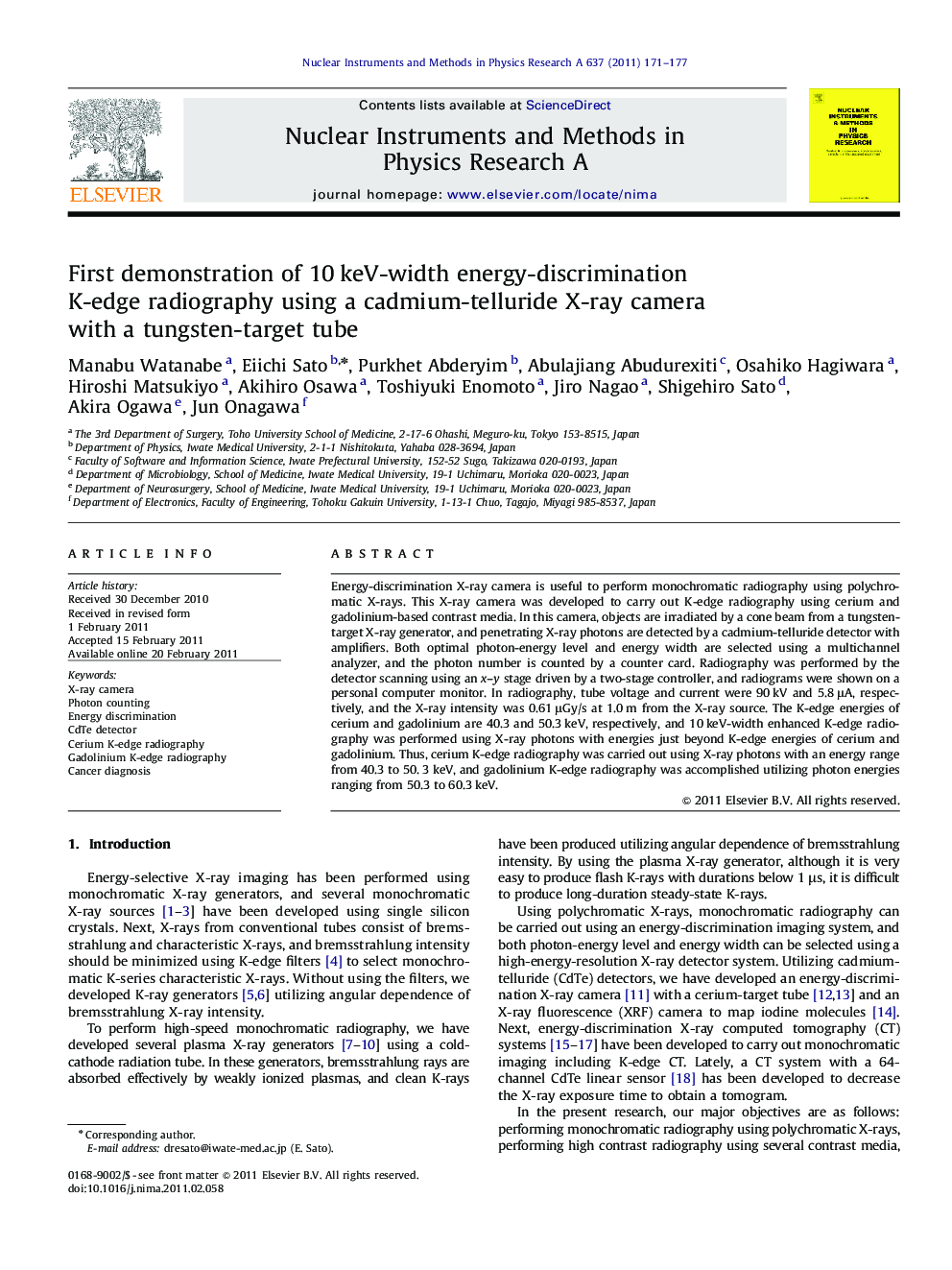| Article ID | Journal | Published Year | Pages | File Type |
|---|---|---|---|---|
| 1825484 | Nuclear Instruments and Methods in Physics Research Section A: Accelerators, Spectrometers, Detectors and Associated Equipment | 2011 | 7 Pages |
Energy-discrimination X-ray camera is useful to perform monochromatic radiography using polychromatic X-rays. This X-ray camera was developed to carry out K-edge radiography using cerium and gadolinium-based contrast media. In this camera, objects are irradiated by a cone beam from a tungsten-target X-ray generator, and penetrating X-ray photons are detected by a cadmium-telluride detector with amplifiers. Both optimal photon-energy level and energy width are selected using a multichannel analyzer, and the photon number is counted by a counter card. Radiography was performed by the detector scanning using an x–y stage driven by a two-stage controller, and radiograms were shown on a personal computer monitor. In radiography, tube voltage and current were 90 kV and 5.8 μA, respectively, and the X-ray intensity was 0.61 μGy/s at 1.0 m from the X-ray source. The K-edge energies of cerium and gadolinium are 40.3 and 50.3 keV, respectively, and 10 keV-width enhanced K-edge radiography was performed using X-ray photons with energies just beyond K-edge energies of cerium and gadolinium. Thus, cerium K-edge radiography was carried out using X-ray photons with an energy range from 40.3 to 50. 3 keV, and gadolinium K-edge radiography was accomplished utilizing photon energies ranging from 50.3 to 60.3 keV.
